This 1600 Calorie Meal Plan Hack Changed How I Think About Food Forever

I used to think a 1600-calorie meal plan was just about dividing food into smaller portions and counting every bite. That approach completely missed how my body actually processes food throughout the day. The U.S. Department of Agriculture (USDA) guidelines tell us that a 1600-calorie daily intake should include 4 cups of vegetables, 3 cups of fruit, 5 ounces of grains, and 22 grams of oils, but these recommendations ignore something that made all the difference for me: when you eat matters just as much as what you eat.
Here’s what worked for me. Your body’s natural clock, how it absorbs food, and the connection between your gut and brain can turn those same 1600 calories into something that actually works with your biology instead of fighting against it. I’m not saying I cracked some secret code – I just stopped making my life harder than it needed to be.
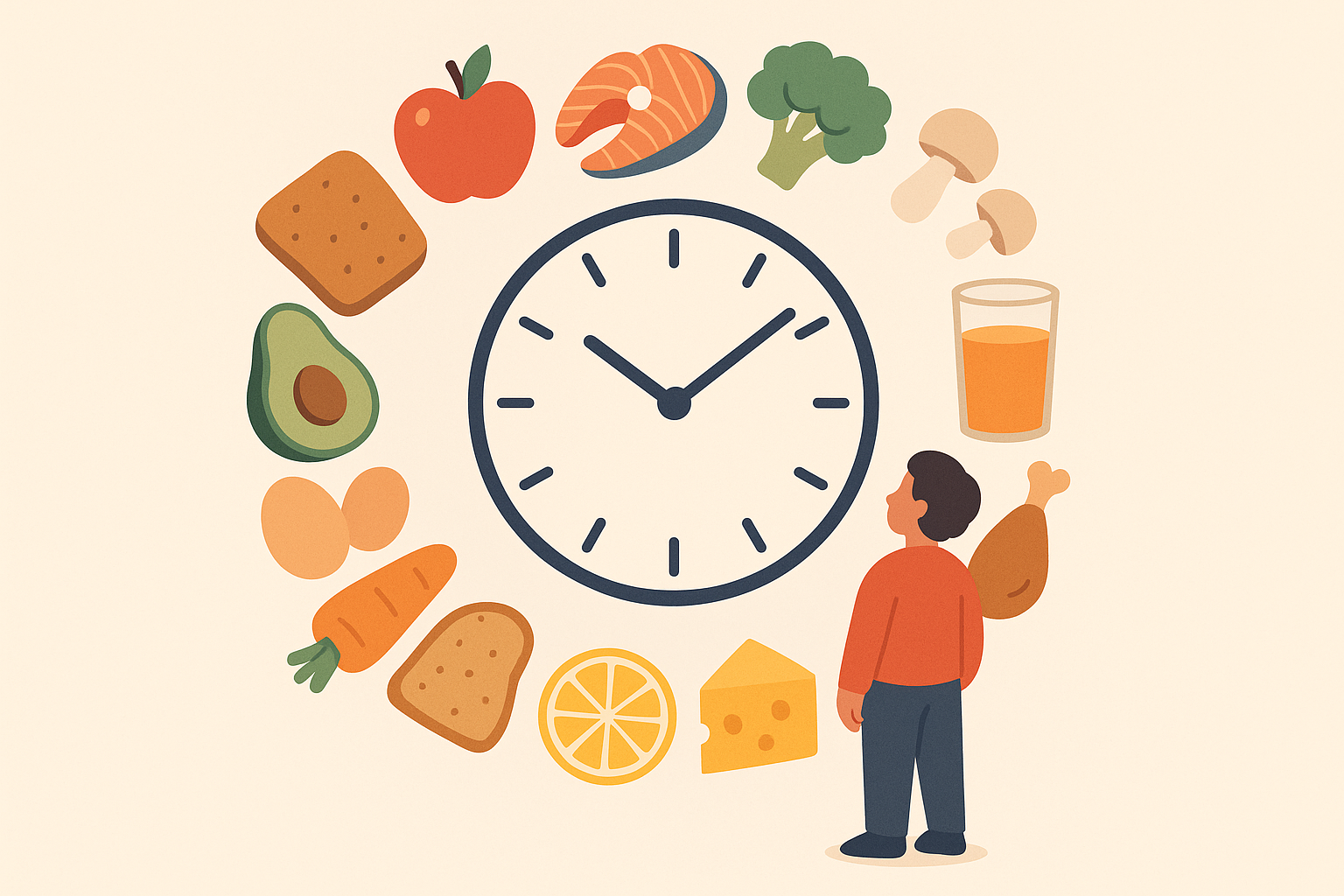
Table of Contents
- Why Your Body Clock Matters More Than Calories
- The Hidden Science of Food Absorption That Nobody Talks About
- How I Learned to Cycle My Macros Without Losing My Mind
- The Gut-Brain Connection That Controls Your Metabolism
- The Psychology Behind Why Most Meal Plans Actually Fail
- Final Thoughts
TL;DR
- Your body processes food differently throughout the day – I started eating 40% of my calories in the morning when my body can actually handle them, and it was a game changer
- Some food combinations can boost nutrient absorption by 300-500%, which basically means getting more bang for your nutritional buck
- Switching between high-carb and low-carb days keeps your metabolism from getting too comfortable while sticking to your calorie target
- Timing your fiber and including fermented foods can completely change your gut bacteria, which directly affects your mood and energy
- Having meal templates ready eliminates that “what should I eat” brain fog and makes healthy choices automatic
- You can still eat socially and honor your cultural food traditions without sabotaging everything
Why Your Body Clock Matters More Than Calories
Most people split their 1600 calories evenly throughout the day. I did this for years and wondered why I felt sluggish in the mornings and wired at night. Turns out, your body’s internal clock affects everything – when you’re most sensitive to insulin, your hormone levels, even how well your stomach works. The timing of your calories matters just as much as the total amount.
I stopped fighting against my biology and started working with it. The difference was immediate.
Your Morning Metabolic Superpower
Between 6-10 AM, your body is basically primed to handle food efficiently. Your insulin sensitivity is at its peak while cortisol naturally rises to get you ready for the day. This creates the perfect window where your body can process carbs and use nutrients for energy instead of storing them as fat.
I started eating 35-40% of my daily calories during this window. The change in my energy levels throughout the day was honestly dramatic – no more 3 PM crashes or feeling like I needed a nap after lunch.
| Time Window | What’s Happening | How Many Calories | What I Actually Eat |
|---|---|---|---|
| 6-10 AM | Body’s most efficient | 35-40% (560-640 cal) | 25-30g protein, 40-50g carbs, 15-20g fat |
| 12-3 PM | Digestion works best | 30-35% (480-550 cal) | My biggest, most complex meal |
| 6-8 PM | Everything’s slowing down | 20-25% (320-400 cal) | High protein, easy on the carbs |
| After 8 PM | Body’s basically done | 5-10% (80-160 cal) | Maybe some protein if I’m hungry |
The Big Morning Meal That Actually Works
During your morning window, your body can handle a substantial amount of food while actually using it efficiently. I eat 560-640 calories in my first meal – way more than I used to think was “allowed” for breakfast. I aim for 25-30g protein to keep me full, 40-50g complex carbs for brain fuel, and 15-20g healthy fats for sustained energy.
This works with your natural hormone patterns instead of against them. Here’s what my morning actually looks like:
My Go-To Morning Meal (620 calories):
- 2 whole eggs + 2 egg whites scrambled with spinach (220 cal, 20g protein)
- 1 cup steel-cut oats with cinnamon (150 cal, 30g carbs)
- 1/2 medium avocado (120 cal, 11g fat)
- 1 cup berries (80 cal, 20g carbs)
- 1 tablespoon almond butter (95 cal, 8g fat)
This keeps me satisfied and energized until lunch. No more mid-morning snack attacks or feeling shaky by 10 AM.

Why Late Night Eating Sabotages Everything
As your body starts producing melatonin and your core temperature drops in the evening, your metabolism slows down by about 10%. This means your body gets less efficient at processing food, especially carbs. I learned this the hard way after months of wondering why I felt bloated and restless when I ate big dinners.
Now I keep my evening meals to 320-400 calories (about 20-25% of my total) and focus on protein with fiber-rich vegetables. I avoid refined carbs after 7 PM. This simple change dramatically improved my sleep quality and how I feel when I wake up.
Working With Your Hormones Instead of Against Them
Beyond just splitting up calories, you can time specific nutrients to help with leptin sensitivity, thyroid function, and growth hormone release during sleep. When I figured out when my body was most receptive to different types of nutrients, I could structure my 1600 calories for maximum benefit.
The Bedtime Protein Game Changer
I eat 20-25g of casein protein 1-2 hours before bed to support muscle recovery overnight and keep my metabolism humming during the fasting period. This slow-digesting protein provides a steady stream of amino acids throughout the night, preventing muscle breakdown and supporting the natural growth hormone surge during deep sleep.
The difference in how I feel when I wake up is remarkable. My muscles feel less stiff, and I actually have energy for my morning workout instead of dragging myself through it.
Your Digestive Sweet Spot
The 12-3 PM window is when your digestive system is firing on all cylinders, making it perfect for your biggest, most complex meal of 480-550 calories. I save the harder-to-digest foods for this time – cruciferous vegetables, legumes, and nutrient-dense options that require more work from your digestive system.
I also pair iron-rich foods with vitamin C sources during this window to maximize absorption. My afternoon energy crashes completely disappeared when I started eating this way.
Midday Meal Strategy (don’t stress if you’re not perfect):
- ☐ Make this your largest meal between 12-3 PM
- ☐ Include iron-rich foods with vitamin C sources
- ☐ Add cruciferous vegetables and legumes
- ☐ Aim for 480-550 calories total
- ☐ Include 25-30g protein for sustained fullness
- ☐ Pair complex carbs with healthy fats
The Hidden Science of Food Absorption That Nobody Talks About
Traditional calorie counting completely ignores how much of what you eat actually gets absorbed and used by your body. This perspective turns a basic 1600-calorie plan into something that actually works, where food combinations, how you prepare things, and timing can multiply the nutritional value of every bite.
I was honestly shocked to learn that certain food combinations can increase nutrient absorption by 300-500%. This means your 1600 calories can work exponentially harder without spending more money or making things complicated.
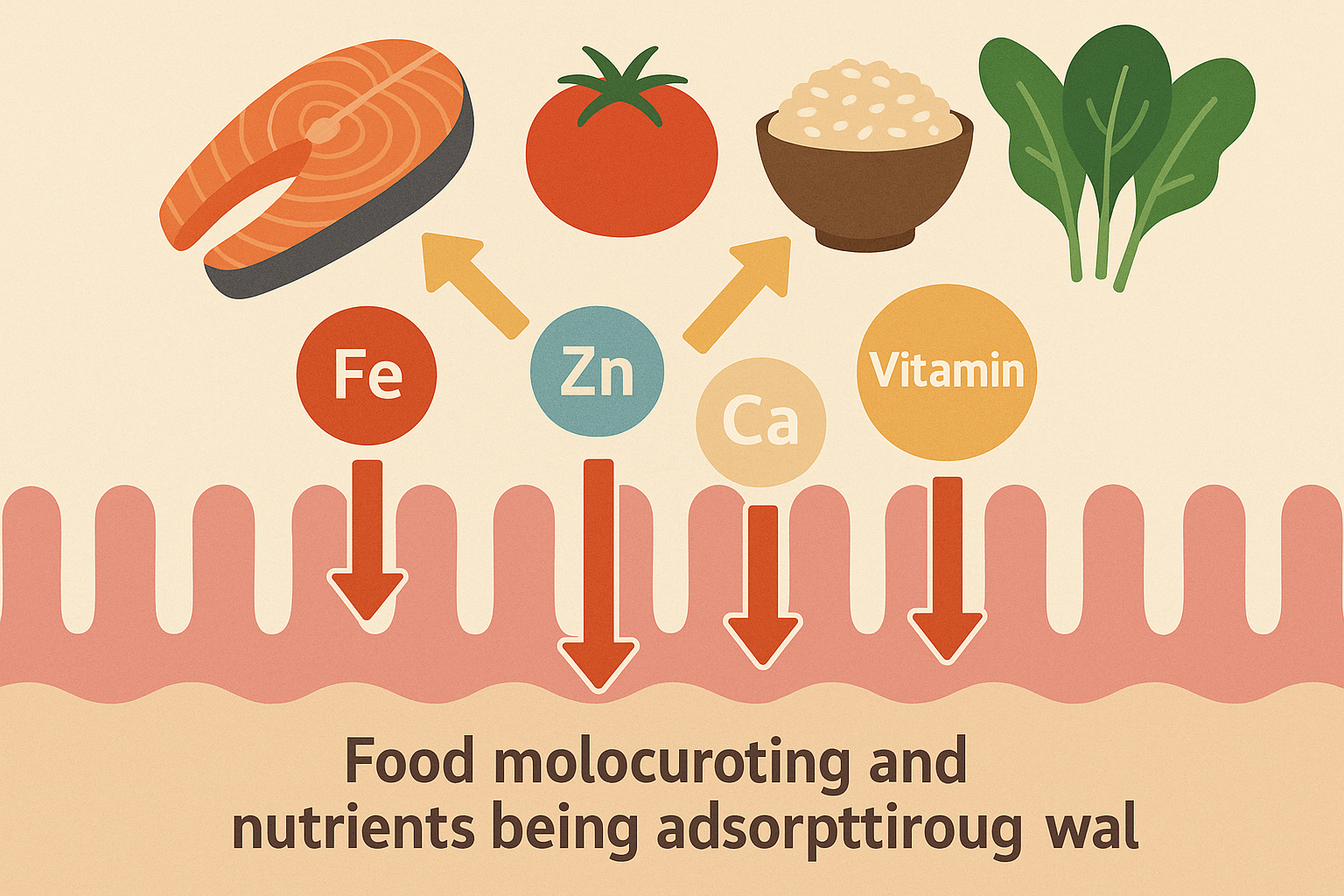
Food Pairing Tricks That Actually Make a Difference
Understanding which foods work better together lets you maximize the nutritional impact of every meal without increasing portion sizes or calories. I started paying attention to these combinations and noticed improvements in my energy levels and overall well-being within weeks. The science is cool, but honestly, how I felt was proof enough.
Getting More From Fat-Soluble Vitamins
Vitamins A, D, E, and K need dietary fat to be absorbed, but the type and timing of fat makes a huge difference. I pair beta-carotene rich foods with 5-7g of healthy fats, eat vitamin D with meals containing 10-15g fat, and include avocado or nuts with leafy greens.
These simple changes dramatically increase vitamin absorption without significantly impacting your calorie budget.
| Nutrient | Food Source | What Helps It Absorb | Easy Combo |
|---|---|---|---|
| Beta-carotene | Carrots, sweet potatoes | 5-7g healthy fats | Roasted carrots with olive oil |
| Vitamin K | Leafy greens | 10-15g fats | Spinach salad with avocado |
| Iron (plant-based) | Lentils, spinach | 25mg Vitamin C | Lentils with bell peppers |
| Calcium | Dairy, leafy greens | Keep away from iron for 2+ hours | Morning yogurt, evening spinach |
The Mineral Absorption Game
Many minerals compete for absorption pathways while others help each other out when you eat them strategically. I separate calcium-rich foods from iron-rich meals by 2+ hours to prevent them from fighting each other. When I combine vitamin C sources with plant-based iron (aiming for 25mg vitamin C per 1mg iron), I can dramatically improve absorption.
Including zinc-rich foods with protein sources creates optimal conditions for mineral uptake. These strategies have made a noticeable difference in how I feel, especially my energy levels and recovery from workouts.
Dealing With Hidden Nutrient Blockers
Compounds called phytates, oxalates, and lectins can significantly reduce how much nutrition you actually get from your 1600-calorie plan. Proper preparation techniques can neutralize these nutrient blockers and increase mineral availability by up to 50% while reducing digestive stress.
The Simple Soaking and Sprouting Method
I pre-treat grains, legumes, and nuts by soaking them for 12-24 hours with 1 tablespoon of acid (lemon juice or apple cider vinegar). This dramatically improves nutrient availability. I rinse thoroughly and cook in fresh water, or sprout for 24-48 hours to maximize nutrient density while making these foods easier to digest.
The difference in how I feel after eating properly prepared grains and legumes is remarkable. No more bloating or digestive discomfort – I actually look forward to eating beans now.
Getting More From Your Food (start with what feels manageable):
- ☐ Soak grains and legumes 12-24 hours with acid
- ☐ Rinse thoroughly before cooking
- ☐ Cook in fresh water, not the soaking liquid
- ☐ Consider sprouting for 24-48 hours
- ☐ Pair iron sources with vitamin C
- ☐ Separate calcium and iron by 2+ hours
- ☐ Include healthy fats with fat-soluble vitamins
How I Learned to Cycle My Macros Without Losing My Mind
Instead of maintaining the same macronutrient ratios every day (which can make your metabolism get too comfortable), I cycle between different approaches within my 1600-calorie framework. This keeps my insulin sensitivity sharp, promotes fat burning, and prevents my metabolism from slowing down.
This approach requires some planning, but it offers significant advantages over rigid meal plans. I’ve maintained my results for over two years using this method, and more importantly, I don’t feel deprived or bored.
The Weekly Carb Strategy That Actually Works
I strategically vary carbohydrate intake based on my activity levels, stress, and how I’m feeling while maintaining my 1600-calorie target. Understanding when my body benefits from higher carbohydrate intake versus when lower carb approaches work better has been a complete game-changer.
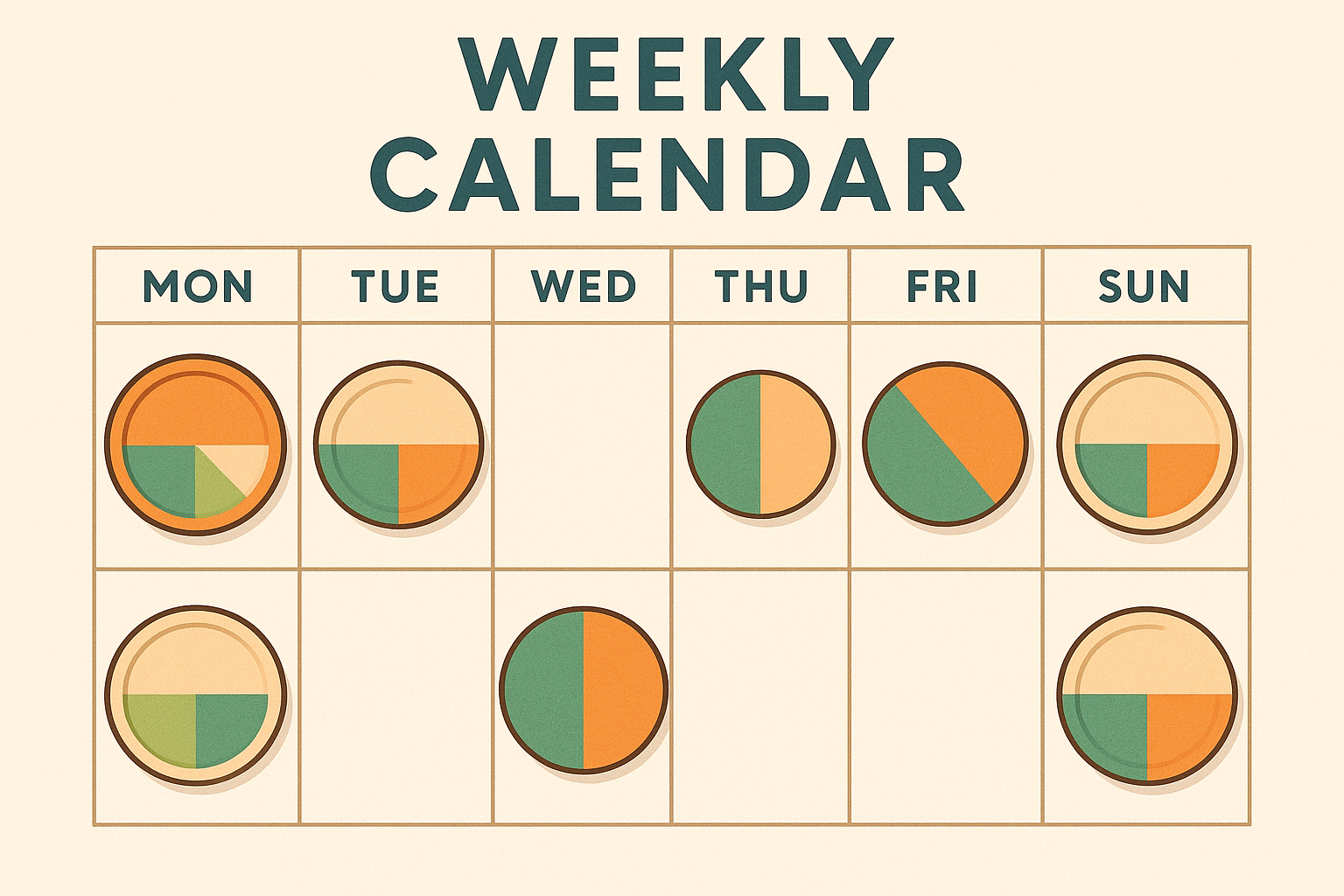
My Weekly High-Carb Reset Day
I do one day per week with 50-60% carbohydrates (200-240g within 1600 calories) to restore leptin levels and prevent metabolic slowdown. I focus on glucose-based carbs like rice and potatoes rather than fructose, time most of them around physical activity, and reduce fat intake to 15-20% on these days.
This keeps my calorie targets while providing metabolic benefits
This keeps my calorie targets while providing metabolic benefits. My energy levels on workout days improved dramatically when I started timing these high-carb days strategically.
High-Carb Reset Day Sample (1600 calories):
- Breakfast: Oatmeal with banana and berries (320 cal, 65g carbs)
- Pre-workout: Rice cakes with honey (160 cal, 40g carbs)
- Post-workout: Sweet potato and lean protein (400 cal, 60g carbs)
- Lunch: Quinoa bowl with vegetables (480 cal, 70g carbs)
- Dinner: Brown rice with lean fish (240 cal, 30g carbs)
- Total: 240g carbs (60%), 120g protein (30%), 18g fat (10%)
Strategic Low-Carb Days That Don’t Suck
I restrict carbohydrates to under 20% of calories (80g) for 2-3 days weekly to enhance fat burning and improve insulin sensitivity. This involves increasing protein to 35-40% of calories (140-160g), filling remaining calories with healthy fats, and focusing on non-starchy vegetables for micronutrients.
I occasionally check ketone levels if I’m going for mild nutritional ketosis. These lower-carb days have improved my mental clarity and helped me break through weight loss plateaus. Plus, I actually like how I feel on them now – no more brain fog or energy crashes.
Rotating Your Protein Sources (Because Variety Matters)
I vary protein sources throughout the week to ensure complete amino acid profiles while supporting different aspects of health and performance. This approach prevents boredom while optimizing muscle protein synthesis and supporting gut microbiome diversity through different protein types.
The Complete vs. Incomplete Protein Strategy
I alternate between complete animal proteins and strategically combined plant proteins to optimize muscle building while supporting gut microbiome diversity. I plan 3-4 days with complete proteins (eggs, fish, poultry) and dedicate 2-3 days to plant-based combinations like beans with rice or lentils with quinoa.
I include hemp seeds, spirulina, or nutritional yeast for B-vitamin support on plant-based days. This creates optimal protein variety while keeping my meals interesting and my taste buds happy.
Weekly Protein Rotation Template:
- Monday/Wednesday/Friday: Complete animal proteins (eggs, fish, poultry)
- Tuesday/Thursday: Plant protein combinations (beans + rice, lentils + quinoa)
- Saturday: Mixed day with both sources
- Sunday: Flexible based on social plans
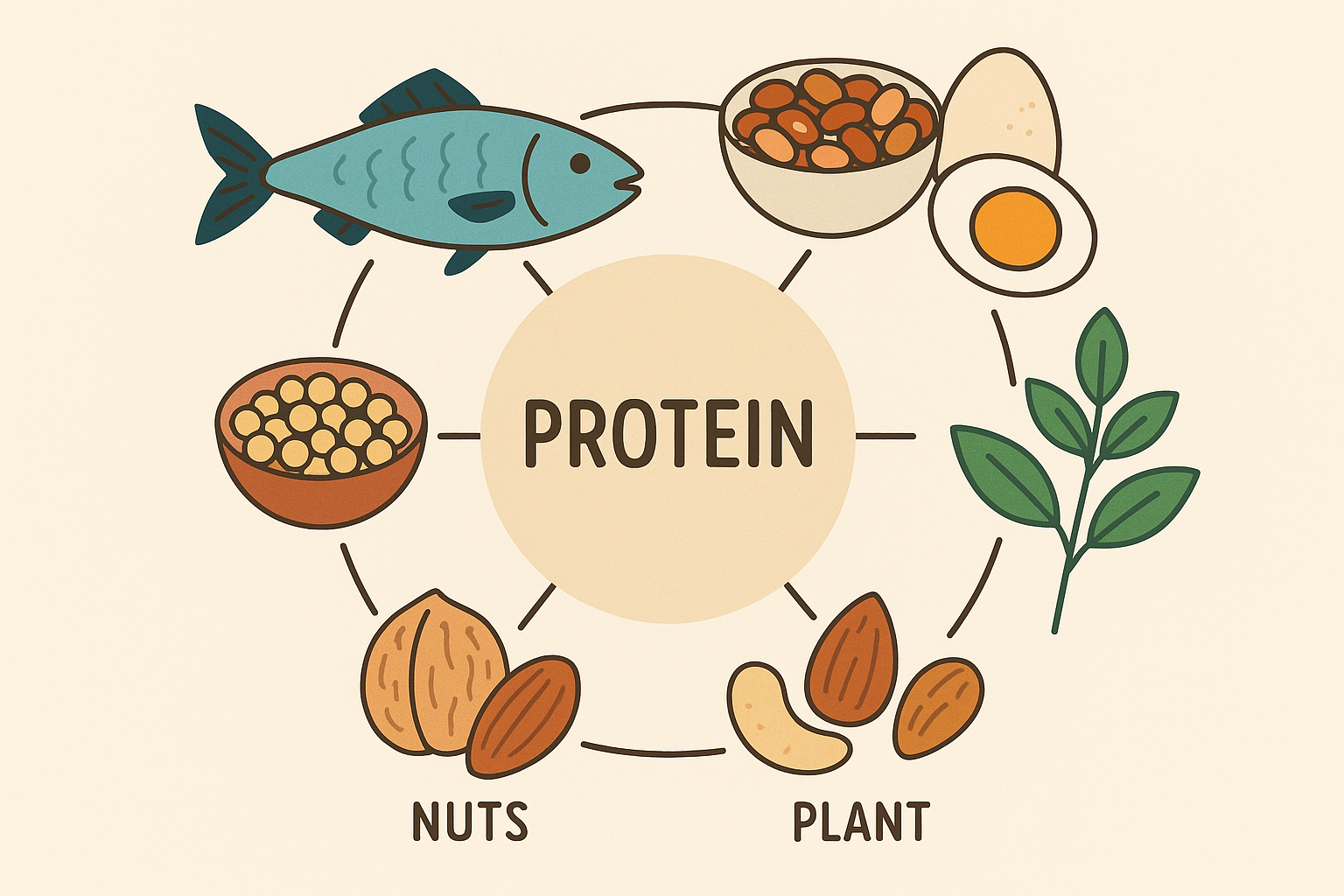
The Gut-Brain Connection That Controls Your Metabolism
The most overlooked aspect of 1600-calorie meal planning is how food choices influence your gut bacteria, which directly impacts neurotransmitter production, inflammation levels, and metabolic rate. Understanding this connection allows you to optimize not just physical health, but mental clarity and mood through strategic food choices within your caloric constraints.
I was honestly amazed to discover how much my mood and energy levels improved when I started focusing on gut health within my meal planning framework. My anxiety decreased, my sleep improved, and I stopped getting that afternoon brain fog that used to derail my productivity.
Timing Your Fiber for Maximum Impact
The order and timing of different fiber types can dramatically influence which beneficial bacteria thrive in your gut, affecting everything from mood to metabolism. Strategic fiber timing within your 1600-calorie framework optimizes gut function and neurotransmitter production throughout the day.
My Morning Gut Health Routine
Starting my day with specific prebiotic fibers sets the stage for optimal gut function and neurotransmitter production. I include 5-7g of foods rich in inulin like Jerusalem artichoke, garlic, and onions in breakfast, add 1-2 tablespoons of ground flaxseed or chia seeds, and consider resistant starch from cooled potatoes or green bananas.
I drink 16-20oz of water to support fiber function and gut health. This morning protocol has significantly improved my digestive comfort and mental clarity throughout the day. I used to feel foggy until my second cup of coffee – now I’m sharp from the moment I wake up.
The Mediterranean Diet continues to dominate health headlines, with “the Mediterranean Diet ranking number one on U.S. News & World Report Best Diets list for 2024” according to Joy Bauer. This eating pattern’s emphasis on diverse plant foods and healthy fats aligns perfectly with gut microbiome optimization strategies, particularly when adapted to a structured 1600-calorie framework.
Timing Your Plant Compounds for Better Metabolism
These powerful plant compounds serve as fuel for beneficial gut bacteria while providing antioxidant benefits. When you eat them affects their impact on metabolism and inflammation. Strategic consumption enhances nutrient absorption while supporting beneficial bacteria within your caloric budget.
The Post-Meal Plant Compound Strategy
I consume foods or beverages rich in these compounds 30-60 minutes after meals to enhance nutrient absorption while supporting beneficial bacteria. Following lunch with green tea or matcha (200-300mg plant compounds), including berries or dark chocolate as afternoon snacks, and ending dinner with herbal teas maximizes these benefits.
Aiming for 500-800mg total daily has improved my recovery time and reduced inflammation markers that I track through regular blood work. Plus, it gives me a legitimate excuse to eat dark chocolate every day.
Adding Fermented Foods Without Blowing Your Calories
Including diverse fermented foods provides live probiotics while adding minimal calories but maximum metabolic benefit. I rotate between different fermented foods weekly (kimchi, sauerkraut, kefir, miso), consume 2-4 tablespoons with meals, and include probiotic-rich beverages like kombucha (limited to 4oz for sugar control).
I also consider fermented protein sources like tempeh or natto for optimal gut health. The variety keeps my taste buds interested while supporting my microbiome diversity. My digestion has never been better, and I rarely get sick anymore.
Daily Gut Health Protocol (start with what you can handle):
- ☐ Start with 5-7g prebiotic fiber at breakfast
- ☐ Include 2-4 tbsp fermented foods with lunch
- ☐ Have a plant compound-rich beverage after meals
- ☐ Aim for 500-800mg total plant compounds daily
- ☐ Rotate fermented food sources weekly
- ☐ Limit kombucha to 4oz for sugar control
- ☐ End day with herbal tea
The Psychology Behind Why Most Meal Plans Actually Fail
Even the most sophisticated meal plan fails without addressing the mental and behavioral patterns that determine long-term success. Understanding how decision fatigue, environmental design, and your relationship with food impact your 1600-calorie framework is crucial for sustainable results.
I learned this the hard way after multiple failed attempts at rigid meal plans. The breakthrough came when I addressed the mental game, not just the nutritional science. I used to be the person who’d eat crackers standing in the kitchen because choosing what to make for dinner felt too overwhelming.
Making Food Decisions Automatic
Every food choice requires mental energy, and decision fatigue can derail even well-intentioned meal plans. Creating systems that make healthy choices feel effortless rather than exhausting removes the constant burden of decision-making throughout the day.
The Template System That Actually Works in Real Life
I establish core meal templates that provide 80% of my nutrition needs with 20% flexibility for variety and social situations. This creates sustainable structure without making me feel trapped. I design 3-4 breakfast templates (350-400 calories), create 5-6 lunch combinations (450-500 calories), develop 4-5 dinner frameworks (400-450 calories), and reserve 200-300 calories for flexible additions.
This eliminates daily decision-making stress while maintaining nutritional quality and variety. Some days I don’t want to think at all, and that’s totally okay.
Template System Example:
Breakfast Template A (380 calories):
- Base: 2 eggs + 2 egg whites (140 cal)
- Carb: 1 slice whole grain toast (80 cal)
- Fat: 1/2 avocado (120 cal)
- Veggie: Spinach and tomatoes (40 cal)
Breakfast Template B (360 calories):
- Base: Greek yogurt, 1 cup (150 cal)
- Carb: 1/2 cup oats (150 cal)
- Fat: 1 tbsp almond butter (95 cal)
- Fruit: 1/2 cup berries (40 cal)
This system provides structure while allowing daily variety within each template. I can mix and match based on what I have available or what sounds good.
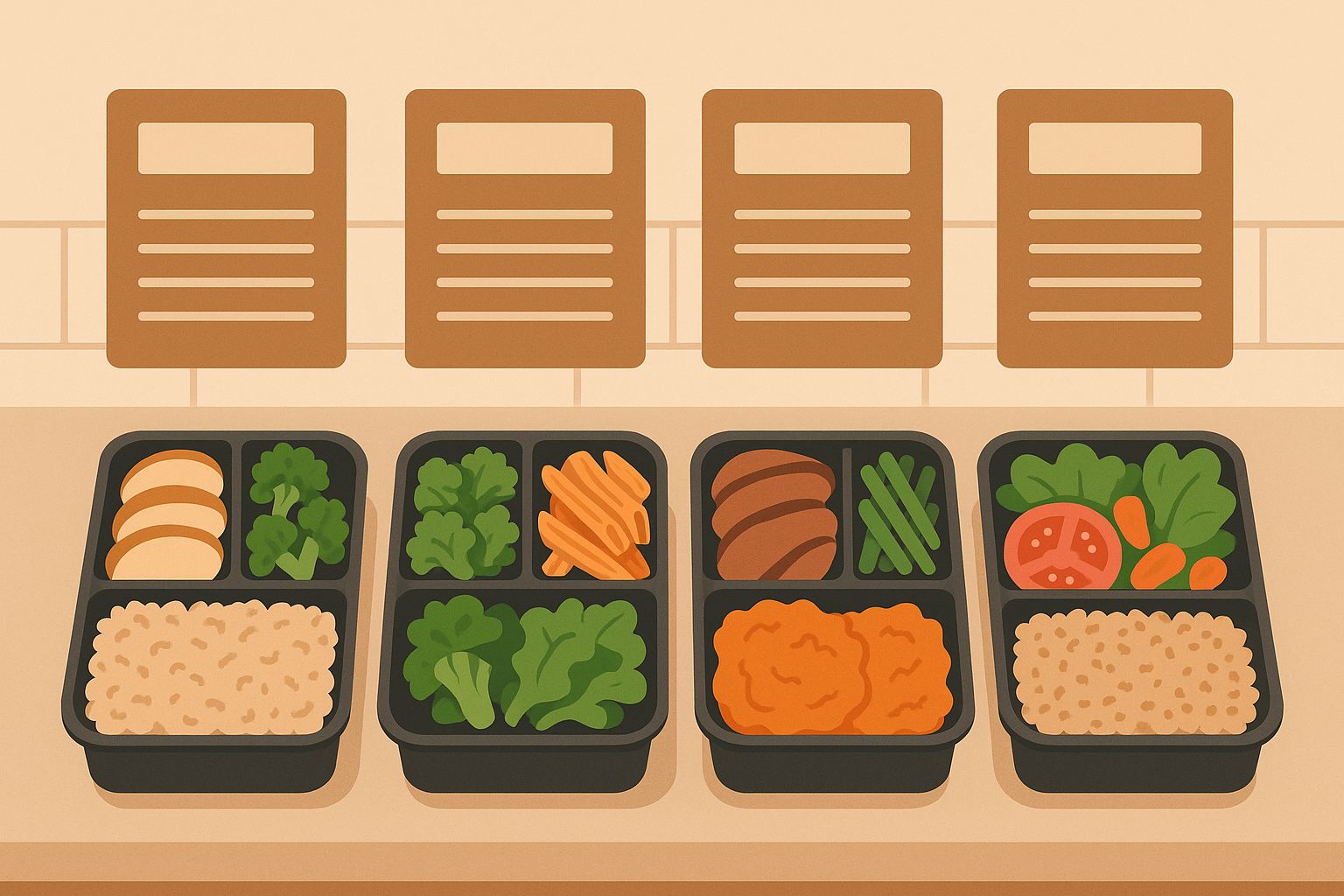
Setting Up Your Environment for Success
Your physical environment influences food choices more than willpower alone. Strategic environmental design makes healthy choices automatic. I pre-portion nuts, seeds, and cut vegetables in visible containers, place healthy options at eye level, use smaller plates for visual satisfaction, and remove processed foods from immediate sight lines.
These simple changes have eliminated most of my impulsive food decisions and made healthy eating feel natural rather than forced. I’m not relying on motivation or willpower anymore – my environment does the heavy lifting.
Preventing Your Body From Getting Too Comfortable
Your body adapts to consistent caloric restriction within 2-3 weeks, but strategic variety in food sources, meal timing, and preparation methods can prevent metabolic slowdown while maintaining structure and results.
The Ingredient Rotation System
I systematically rotate through different food sources to ensure diverse nutrient profiles while preventing both metabolic adaptation and food boredom. I create weekly protein rotations, cycle through different cooking methods, vary spice and herb profiles to stimulate different metabolic pathways, and introduce one new ingredient weekly to maintain metabolic flexibility.
This approach has kept my results consistent for over two years without hitting major plateaus. Plus, it keeps things interesting – I’ve discovered so many foods I never would have tried otherwise.
Smart Calorie Variation That Doesn’t Drive You Crazy
I slightly vary daily caloric intake (1500-1700 calories) while maintaining weekly averages to prevent metabolic adaptation. I plan 2 higher days (1650-1700 calories) and 2 lower days (1500-1550 calories) weekly, align higher calorie days with increased activity or stress, use lower calorie days for gentle protocols, and maintain consistent protein across variations to keep my metabolism responsive.
Research shows that a well-structured 1600-calorie meal plan can provide 128g protein, 55g net carbs, 89g fat, and 19g fiber per day according to Strongr Fastr, demonstrating how strategic macro distribution within caloric constraints can optimize both fullness and metabolic function.
Navigating Social Eating Without Sabotaging Everything
Food exists within social and cultural contexts that often conflict with structured meal planning. Developing strategies for social eating while maintaining caloric goals prevents isolation and promotes long-term success without sacrificing relationships or cultural connections.
Social Meal Survival Strategies
I prepare for social eating situations with specific strategies that maintain relationships while supporting health goals. I research restaurant menus in advance, eat a small protein-rich snack (100-150 calories) before social events, practice portion estimation using hand measurements, and suggest non-food-centered activities when possible to create balance between social connection and health goals.
These strategies have allowed me to maintain my progress while actually improving my social relationships. I’m not the person who brings Tupperware to parties anymore, but I’m also not derailing my progress every weekend.
Social Eating Survival Kit:
- ☐ Research restaurant menus beforehand
- ☐ Eat 100-150 cal protein snack before events
- ☐ Practice hand-portion measurements
- ☐ Suggest activity-based social gatherings
- ☐ Plan for one flexible meal per week
- ☐ Maintain 80% adherence mindset
- ☐ Focus on social connection over restriction
Honoring Cultural Food Traditions
Adapting traditional cultural foods to fit within 1600-calorie parameters honors heritage while supporting health goals. I identify core flavors and spices that define cultural preferences, experiment with vegetable-forward versions of traditional dishes, use traditional cooking methods with modified ingredients, and maintain cultural food traditions on special occasions while returning to structure afterward.
This creates sustainable cultural integration without sacrificing my health goals or family relationships. My family thinks I’m a little obsessive about nutrition, but they can’t argue with how much better I feel and look.
The growing popularity of the Mediterranean approach, which “provides approximately 1,600 calories per day, offering individuals seeking weight loss a reference point for portion size” according to Joy Bauer, demonstrates how cultural eating patterns can be successfully adapted to specific caloric targets while maintaining their traditional essence and health benefits.

The USDA guidelines specify that a 1600-calorie plan should limit saturated fats to 18 grams a day and extras (solid fats and sugars) to 130 calories a day according to Saint Luke’s Health System, providing clear parameters for maintaining nutritional quality while accommodating cultural food preferences within your daily caloric budget.
When you’re ready to take your 1600-calorie meal planning to the next level, Organic Authority offers carefully curated supplements and wellness products that support optimal nutrient absorption and metabolic health. Their bioavailable collagen and thoughtfully selected supplements can fill nutritional gaps while working synergistically with your meal planning efforts.
Final Thoughts
Final Thoughts

This approach to 1600-calorie meal planning goes way beyond simple calorie counting. By working with your body’s natural rhythms, getting more bang for your nutritional buck, cycling macronutrients strategically, supporting gut health, and addressing the mental aspects of eating, you’re creating a sustainable framework that works with your biology rather than against it.
The key isn’t perfection – it’s consistency with flexibility. Start by implementing one or two strategies that feel manageable with your current lifestyle, then gradually add others as they become natural habits. Remember that your body is incredibly adaptive, and small, consistent changes compound into significant results over time.
This took me about 6 months to really nail down, and some weeks are still better than others – that’s completely normal. You don’t need to be perfect; I’m still figuring things out too.
Most importantly, this isn’t just about the number on the scale. It’s about creating a relationship with food that supports your energy, mood, cognitive function, and overall quality of life. When you align your eating patterns with your body’s natural processes, you’re not just following a meal plan – you’re optimizing your entire system for long-term health and vitality.

